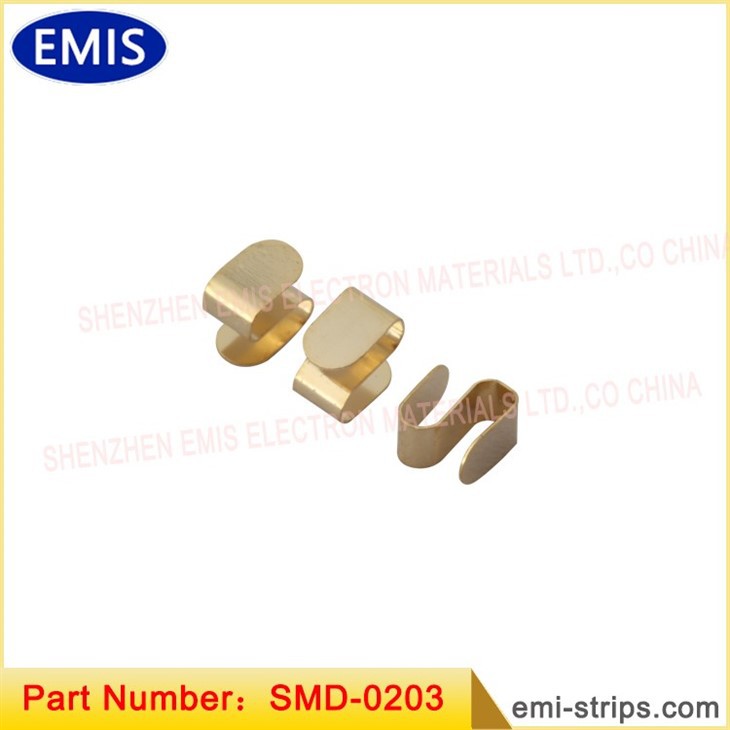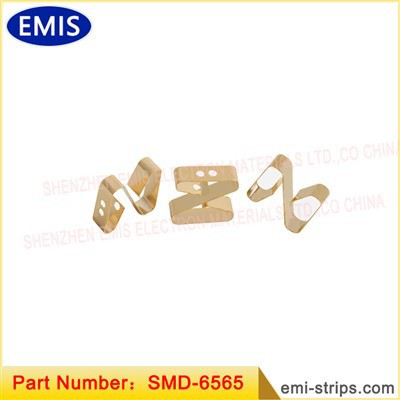As a trusted supplier of PCB Spring Contacts, I've witnessed firsthand the importance of understanding the technical nuances of these components. One critical aspect that often gets overlooked is the parasitic capacitance of PCB Spring Contacts. In this blog post, I'll delve into what parasitic capacitance is, how it affects PCB Spring Contacts, and why it matters in your applications.
Understanding Parasitic Capacitance
Before we dive into the specifics of PCB Spring Contacts, let's first understand what parasitic capacitance is. Capacitance is a fundamental electrical property that describes the ability of a system to store electrical energy in an electric field. It is typically measured in farads (F). When two conductive elements are close to each other and separated by an insulating material (dielectric), a capacitance is formed between them.
Parasitic capacitance, on the other hand, is an unwanted capacitance that exists in a circuit due to the physical arrangement of components and conductors. It is not a deliberate design feature but rather a by - product of the circuit layout. Parasitic capacitance can occur between traces on a PCB, between components, or in the case of PCB Spring Contacts, between the spring contact itself and other nearby conductive elements.
Parasitic Capacitance in PCB Spring Contacts
PCB Spring Contacts are widely used in various electronic devices to establish reliable electrical connections. They are designed to provide a stable and low - resistance connection between different parts of a circuit. However, due to their physical structure and the presence of conductive materials, they can exhibit parasitic capacitance.
The spring contact is usually made of a conductive metal, such as copper or phosphor - bronze, which can act as one of the conductive plates of a capacitor. The nearby conductive elements, such as PCB traces or other components, act as the other plate. The insulating material between them, which could be the air or a dielectric coating on the spring contact, forms the dielectric of the capacitor.
The value of the parasitic capacitance in PCB Spring Contacts depends on several factors:
- Physical Dimensions: The size and shape of the spring contact play a significant role. Larger spring contacts with a greater surface area will generally have a higher parasitic capacitance. For example, a broader and longer spring contact will have more area available for the electric field to interact with nearby conductors, resulting in increased capacitance.
- Distance to Nearby Conductors: The closer the spring contact is to other conductive elements on the PCB, the higher the parasitic capacitance. A small gap between the spring contact and a PCB trace allows for a stronger electric field coupling, leading to an increase in capacitance.
- Dielectric Material: The type of dielectric material between the spring contact and nearby conductors affects the capacitance. Materials with a higher dielectric constant will result in a higher capacitance. For instance, if the spring contact is coated with a dielectric material with a high dielectric constant, the parasitic capacitance will be greater compared to a contact with a low - dielectric - constant coating or just air as the dielectric.
Impact of Parasitic Capacitance on PCB Spring Contacts
The parasitic capacitance of PCB Spring Contacts can have several implications for the performance of electronic circuits:
- Signal Integrity: In high - speed circuits, parasitic capacitance can cause signal distortion. When a high - frequency signal passes through a circuit with a spring contact having significant parasitic capacitance, the signal can be attenuated or delayed. This can lead to errors in data transmission and reduced overall system performance. For example, in a high - speed data communication system, even a small amount of signal distortion due to parasitic capacitance can result in bit errors.
- Power Consumption: Parasitic capacitance can also increase power consumption in a circuit. When the voltage across the capacitor changes, energy is stored and released in the capacitor. This continuous charging and discharging process consumes additional power. In battery - powered devices, this can lead to reduced battery life.
- Resonance Effects: In some cases, the parasitic capacitance can interact with the inductance in the circuit to create resonance conditions. Resonance can cause a significant increase in the amplitude of the current or voltage at a particular frequency, which can damage components or cause the circuit to malfunction.
Minimizing Parasitic Capacitance in PCB Spring Contacts
As a PCB Spring Contacts supplier, we understand the importance of minimizing parasitic capacitance to ensure optimal performance of our products. Here are some strategies we employ:
- Design Optimization: We carefully design the shape and size of our spring contacts to minimize the surface area exposed to nearby conductors. By reducing the area available for the electric field to interact, we can lower the parasitic capacitance. For example, we may use a more compact and streamlined design for spring contacts in high - speed applications.
- Dielectric Selection: We choose appropriate dielectric materials for coating the spring contacts. Low - dielectric - constant materials are preferred as they help to reduce the capacitance. Additionally, we ensure that the coating is uniform and of the right thickness to provide effective insulation.
- PCB Layout Design: We work closely with our customers to optimize the PCB layout. By increasing the distance between the spring contacts and other conductive elements on the PCB, we can reduce the electric field coupling and thus the parasitic capacitance. We also recommend proper grounding and shielding techniques to minimize the impact of external electric fields.
Our Product Range
At our company, we offer a wide range of PCB Spring Contacts to meet the diverse needs of our customers. Some of our popular products include:
- Dedicated SMD Shrapnel for PCB Board: These surface - mount spring contacts are designed for easy integration into PCB assemblies. They are compact and provide reliable electrical connections with minimized parasitic capacitance.
- SMD Gold Plated Spring: The gold plating on these spring contacts not only provides excellent corrosion resistance but also helps to reduce the contact resistance. Our design ensures that the parasitic capacitance is kept at a minimum.
- Electrical Contact Spring: These springs are suitable for a variety of electrical applications. They are engineered to provide a stable and low - capacitance connection, making them ideal for high - performance circuits.
Why Choose Our PCB Spring Contacts
When it comes to PCB Spring Contacts, our products stand out for several reasons:


- Quality Assurance: We have a strict quality control process in place to ensure that all our spring contacts meet the highest standards. We test each contact for electrical performance, including parasitic capacitance, to guarantee reliable operation.
- Customization: We understand that different applications have different requirements. That's why we offer customization services to design spring contacts that meet your specific needs. Whether you need a spring contact with a particular shape, size, or capacitance value, we can work with you to develop the right solution.
- Technical Support: Our team of experienced engineers is always available to provide technical support. We can help you with PCB layout design, signal integrity analysis, and any other issues related to the use of our spring contacts.
Contact Us for Procurement
If you are looking for high - quality PCB Spring Contacts with minimized parasitic capacitance, we would love to hear from you. Our products are designed to provide reliable and efficient electrical connections for your electronic devices. Whether you are in the consumer electronics, automotive, or telecommunications industry, we have the right solution for you.
Contact us today to discuss your requirements and start a procurement negotiation. We are committed to providing you with the best products and services to meet your business needs.
References
- "Fundamentals of Electric Circuits" by Charles K. Alexander and Matthew N. O. Sadiku
- "High - Speed Digital Design: A Handbook of Black Magic" by Howard W. Johnson and Martin Graham






